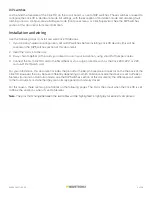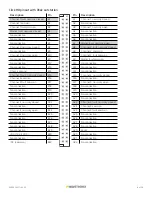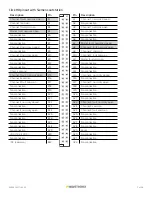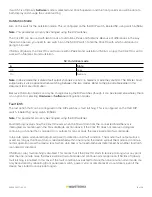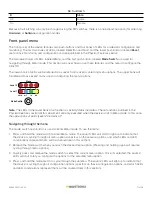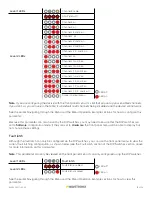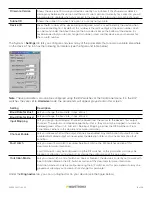
11 of 20
WX-501-0517 • 05.22
S3: fault latch
8
State
Off
Enable
On
Disable
Because fault latching can only be changed using the DIP switches, there is no need (and no option) for selecting
Hardware
or
Software
configuration modes.
Front panel menu
The front panel of the device features two push-buttons and four banks of LEDs for on-device configuration and
monitoring. The first two banks of LEDs, labeled Detection and Fault, and the lower push-button, labeled
Reset
,
are for basic monitoring and configuration and are explained in the Physical Features section.
The two lower banks of LEDs, labeled Menu, and the first push-button, labeled
Mode Switch
, are used for
navigating through Menu mode. This section will cover how to use these features and the menu to configure the
Click 110.
The lower bank of LEDs will be referred to as Level 1 and is used is selecting menu options. The upper bank will
be referred to as Level 2 and is used in configuring the menu options.
Level 1
Mode Switch
Level 2
Menu
PWR MF
TD
RD
1
2
3
4
Note.
The LEDs in the lower bank also function as activity/status indicators. These functions, outlined in the
Physical Features section of this document, are only executed when the device is not in Menu mode. In this case,
the upper bank of LEDs (Level 2) remains off.
Navigating through the menu
The mode switch push-button is used to enter Menu mode. To use the menu:
1. Press and hold the mode switch to enter Menu mode. The Level 1 LEDs will start to light up to indicate that
the device is cycling through all menu options (specifics on these menu options, and which LEDs and LED
combinations represent them, will be covered later in this section).
2. Release the mode switch when you reach the desired menu option. (Pressing and holding again will resume
cycling through menu options.)
3. Quickly press and release the mode switch to select the current menu option. Once it’s selected, the Level 2
LEDs will start to let you configure the options for the selected menu option.
4. Press and hold the mode switch to cycle through the submenu. The Level 2 LEDs will light up to indicate that
the device is cycling though all configuration options (specifics on these configuration options, and which LEDs
and LED combinations represent them, will be covered later in this section).



